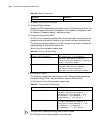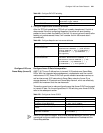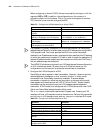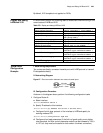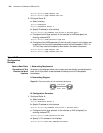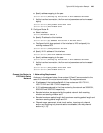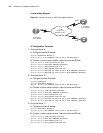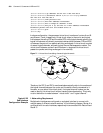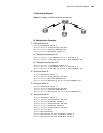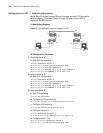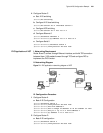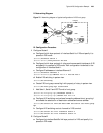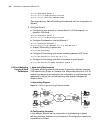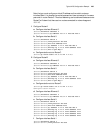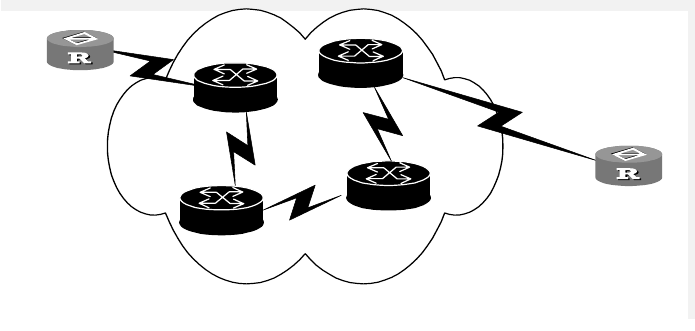
228 CHAPTER 16: CONFIGURING LAPB AND X.25
[Router-Ethernet0]ip address 196.25.231.1 255.255.255.0
[Router-Ethernet0]interface serial 0[Router-Serial0]ip address
192.149.13.2 255.255.255.0
[Router-Serial0]link-protocol x25
[Router-Serial0]x25 x121-address 1004358902
[Router-Serial0]x25 vc-range bi-channel 8 1024
[Router-Serial0]x25 pvc 4 ip 192.149.13.1 x121-address 1004358901
broadcast packet-size 512 512 window-size 5 5
[Router-Serial0]quit
[Router]rip
In above configuration, the permanent virtual circuit numbers of routers A and B
are different: 3 and 4 respectively. Virtual circuit refers to the end-to-end logical
link between the calling DTE and the called DTE, while logical channel refers to the
logical link between two directly connected devices (either between DTE and DCE,
or between the ports of two packet switching exchanges). A virtual circuit consists
of several logical channels, and each logical channel has a separate number. The
virtual circuit between routers A and B is shown in (suppose this virtual circuit
passes four packet switching exchanges in the network).
Figure 71 A virtual circuit consisting of several logical channels
Therefore, the PVC 3 and PVC 4 mentioned above actually refer to the numbers of
the logical channels between the router and the switch directly connected to it.
However, on one side of this virtual circuit, the logical channel number can be
used to identify this virtual circuit without causing misunderstanding. This is why
no strict distinction is made between "virtual circuit" and "logical channel".
Typical X.25
Sub-Interface
Configuration Example
I. Networking Requirement
Multiple sub-interfaces are configured on a physical interface to connect with
multiple peers of different network sections. In the following diagram, Router A is
configured with two sub-interfaces, respectively interconnected with Router B and
Router C.
RouterB
PBX
PBX
PBX
LC 3
LC 4
LC 243
LC 24
LC 3
PBX
RouterA
RouterB
PBX
PBX
PBX
LC 3
LC 4
LC 243
LC 24
LC 3
PBX
RouterA



